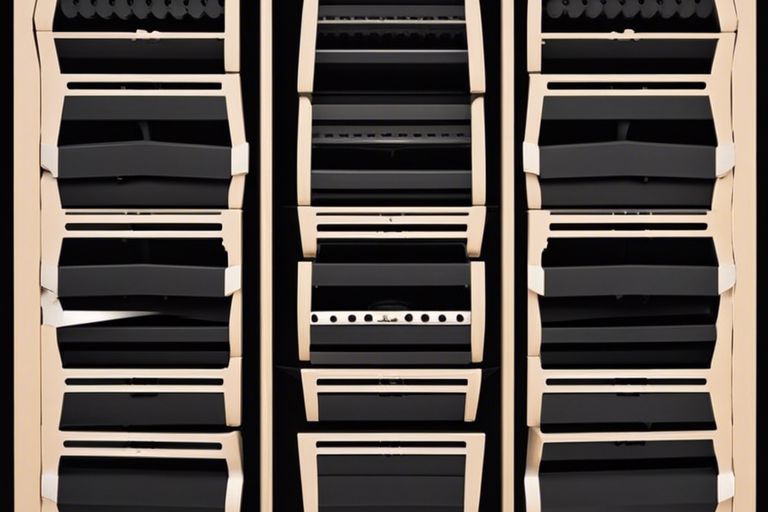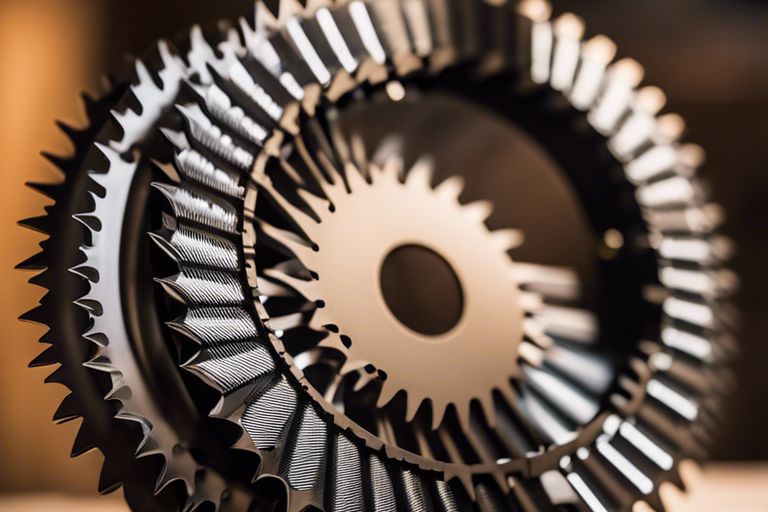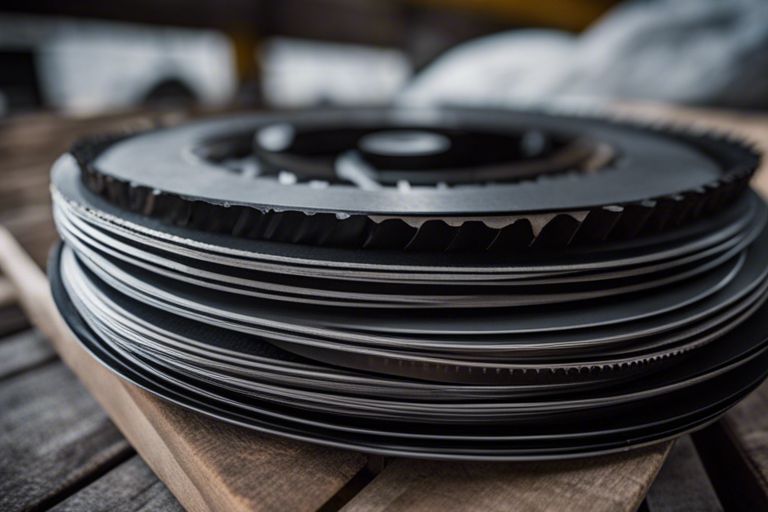Are circular saw blades recyclable

Anticipating whether circular saw blades are recyclable is crucial for maintaining a sustainable workspace. While circular saw blades are predominantly made of metal, often including high-speed steel or carbide tips, improper disposal can pose significant risks to the environment and public health. In this guide, we will examine into the importance of recycling circular saw blades, the dangers of improper disposal, and how to properly recycle these imperative tools to minimize harm and contribute to a greener planet.

Key Takeaways:
- Circular saw blades are typically not recyclable: Most circular saw blades are made of materials that are not easily recyclable such as carbide-tipped teeth and steel bodies.
- Reuse or repurpose circular saw blades: Instead of disposing of them in the regular trash, consider finding ways to reuse or repurpose your old circular saw blades such as turning them into knives or tools with smaller blades.
- Proper disposal: If you can’t reuse or repurpose your circular saw blades, it’s important to dispose of them properly. Check with your local recycling facility to see if they have a specific procedure for disposing of metal blades or consider contacting a scrap metal yard for proper disposal.

Materials and Manufacture of Circular Saw Blades
Types of Materials Used in Blades
Little attention is often paid to the materials that make up circular saw blades, but they play a critical role in the tool’s performance. Steel, carbide, and ceramic are the most common materials used in the production of circular saw blades. Each material offers different benefits in terms of durability, sharpness, and cutting speed. Steel blades are cost-effective and suitable for general-purpose cutting, while carbide-tipped blades are more durable and ideal for cutting through tough materials like hardwood and metal. Ceramic blades are known for their sharpness and heat resistance, making them perfect for cutting abrasive materials like tile and masonry.
| Material | Usage |
| Steel | General-purpose cutting |
| Carbide | Tough materials cutting |
| Ceramic | Abrasive materials cutting |
| Diamond | High precision cutting |
| High-speed steel | Heat-resistant cutting |
This variety ensures that users can choose the right blade for their specific cutting needs. This extensive range of materials used in circular saw blades highlights the versatility and adaptability of this imperative cutting tool.
Manufacturing Processes
Blades are manufactured through a series of precise and intricate processes to ensure their quality and performance. It begins with selecting the appropriate material based on the intended use of the blade. The material is then shaped and formed into the desired blade design using cutting-edge machinery and techniques. Heat treatment processes are often employed to enhance the hardness and durability of the blade, ensuring that it can withstand the rigors of cutting tough materials. Finally, the blade undergoes rigorous quality control measures to guarantee its sharpness and cutting precision before being packaged and distributed to end users.
Recycling Circular Saw Blades
Potential for Recyclability
Many circular saw blades are made from materials like steel or carbide, which have the potential for recyclability. Steel blades can be melted down and reused in manufacturing processes, while carbide blades can be repurposed into other metal products. This makes circular saw blades a promising candidate for recycling efforts.
Challenges in the Recycling Process
Assuming circular saw blades are recyclable, there are still challenges in the recycling process. Little infrastructure exists for collecting and recycling these specialized blades, which can make it difficult for consumers to properly dispose of them. Additionally, the presence of coatings or other materials on the blades can complicate the recycling process.
To effectively recycle circular saw blades, proper collection systems need to be put in place to ensure that blades are sorted and processed correctly. This will require collaboration between manufacturers, retailers, and recycling facilities to create a seamless recycling system. Education for consumers on how to dispose of their blades responsibly is also crucial in overcoming the challenges in the recycling process.
How to Recycle Circular Saw Blades
Steps for Preparing Blades for Recycling
Keep in mind that before recycling your circular saw blades, it is crucial to prepare them properly to ensure they can be recycled efficiently. Start by cleaning the blades thoroughly to remove any dirt, debris, or residue. Make sure to wear protective gloves to avoid any injuries while handling the blades. Once clean, inspect the blades for any signs of damage or wear and tear. If the blades are severely damaged, it may be best to dispose of them responsibly instead of trying to recycle them.
Finding the Right Recycling Facilities
Little information is available on recycling circular saw blades directly due to their complex composition, including different types of metals and carbide tips. However, some metal recycling facilities may accept circular saw blades for recycling. It is vital to contact local recycling facilities or scrap metal yards to inquire about their specific recycling policies for circular saw blades.
With circular saw blades containing potentially hazardous materials such as carbide tips, it is crucial to find the right recycling facilities that can handle these materials safely. Be sure to ask about any special requirements or procedures for recycling circular saw blades to ensure they are processed properly and do not pose a risk to the environment or recycling facility workers.
Alternative Methods of Disposal
Repurposing and Reusing Saw Blades
All circular saw blades might not be suitable for recycling, but that doesn’t mean they are destined for the landfill. Assuming the blades are still in good condition, consider repurposing them for other DIY projects or selling them to metalworkers who can use the material for different applications.
Safe Disposal of Non-recyclable Blades
All circular saw blades deserve proper disposal to prevent any potential hazards. Clearly, blades that are no longer suitable for use or recycling should be handled with caution to avoid injuries or environmental harm. Contact your local waste management facility to inquire about any specific protocols for disposing of non-recyclable saw blades.
Blades that have worn out or are damaged can pose a risk of sharp edges that might cause injuries to individuals handling the waste. It is crucial to handle these blades with care or consider taking them to specialized facilities equipped to deal with such hazardous materials. By preventing improper disposal, we can protect both individuals and the environment from potential harm.

Benefits of Recycling Circular Saw Blades
Environmental Impact
To recycle circular saw blades is to make a positive impact on the environment. By diverting these blades from landfills, we reduce the amount of waste that ends up polluting our land and waterways. Recycling also helps conserve natural resources as it reduces the need for new raw materials, ultimately lessening the strain on our planet.
Economic Advantages
One of the economic advantages of recycling circular saw blades is the potential cost savings for industries and businesses. By reusing and repurposing these materials, companies can reduce their expenses on manufacturing new products. Recycling can also create new job opportunities in the recycling and manufacturing sectors, contributing to economic growth.
With the increasing focus on sustainability, more companies and individuals are realizing the benefits of recycling circular saw blades. Not only does this practice help protect the environment and conserve resources, but it also presents economic opportunities and reduces manufacturing costs in the long run.
Conclusion
Drawing together the information explored, it is evident that circular saw blades are recyclable. Many recycling centers accept old saw blades, provided they are properly prepared for disposal. By following guidelines such as cleaning the blades, removing any hazardous materials, and ensuring they are not mixed with regular waste, you can contribute to reducing environmental impact. For more detailed instructions on how to dispose of old circular saw blades, visit How to Dispose of Old Circular Saw Blades.
FAQ
Q: Are circular saw blades recyclable?
A: Yes, circular saw blades are recyclable. Made primarily of steel, which is a highly recyclable material, circular saw blades can be melted down and reused in the production of new steel products.
Q: How can I recycle my old circular saw blades?
A: To recycle your old circular saw blades, you can take them to a local metal recycling facility. Many metal recycling centers accept saw blades for recycling. You can also check with your local recycling program to see if they have specific guidelines for recycling saw blades.
Q: Why is it important to recycle circular saw blades?
A: Recycling circular saw blades helps reduce the amount of waste sent to landfills and conserves natural resources. By recycling steel from saw blades, we can reduce the need for new steel production, which in turn saves energy and reduces greenhouse gas emissions.





